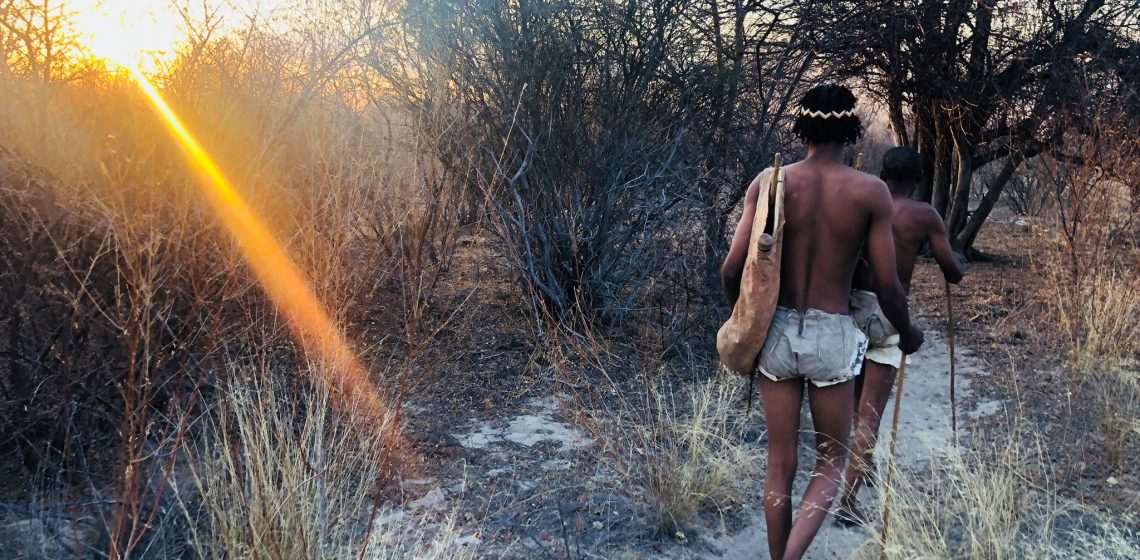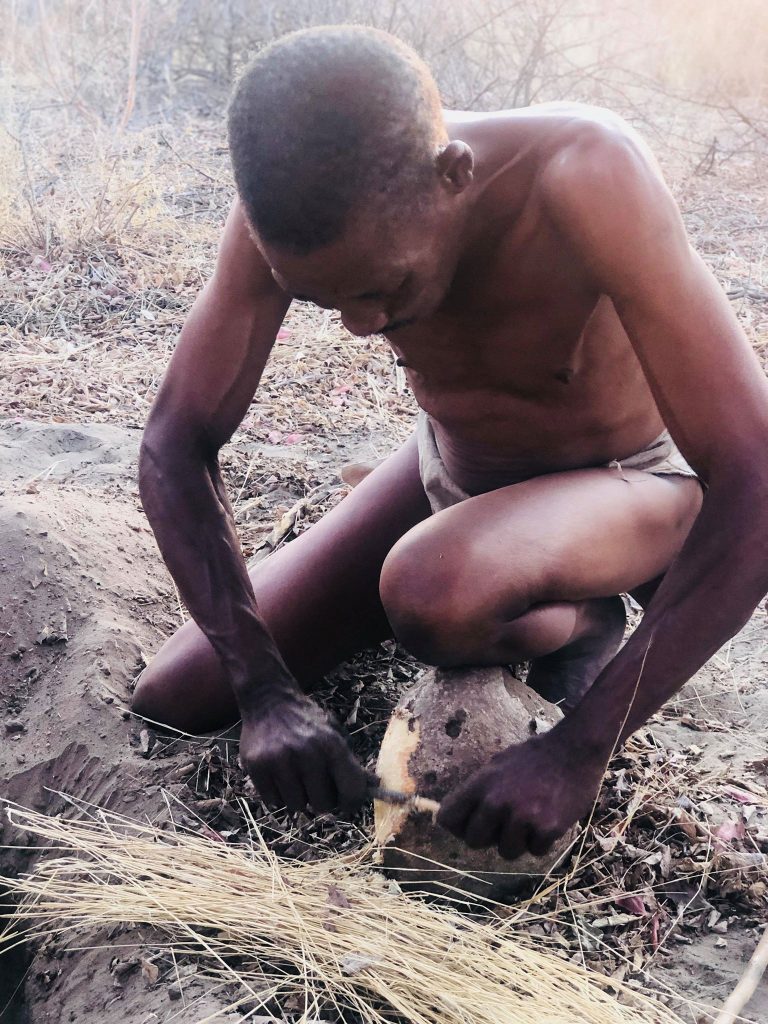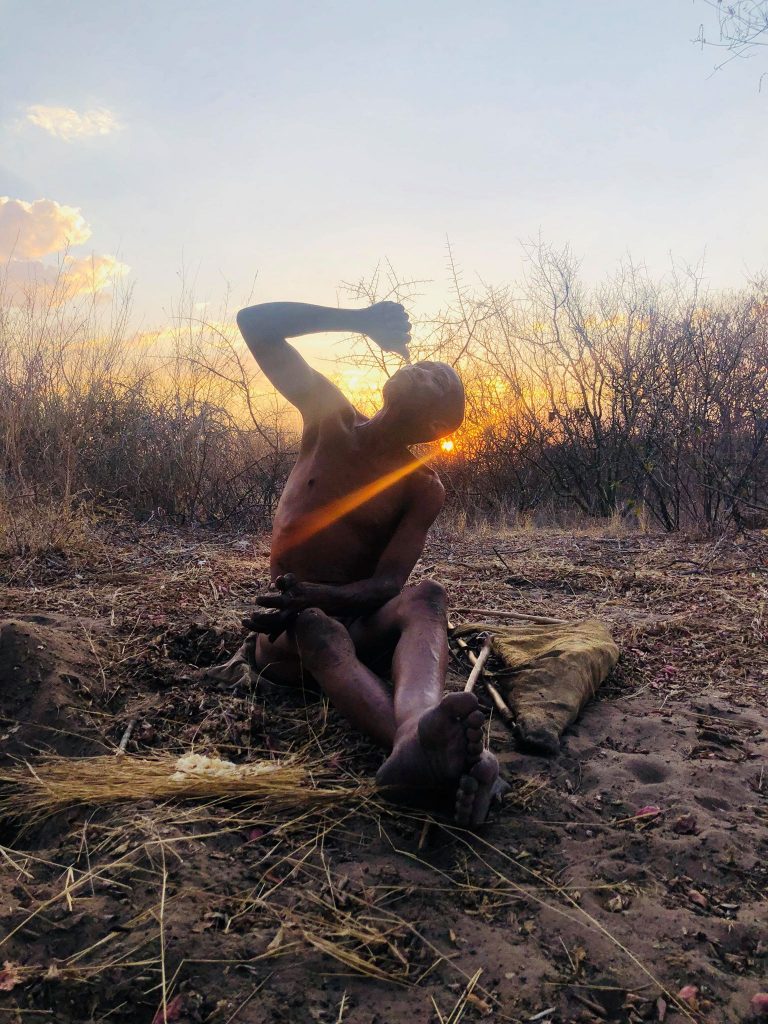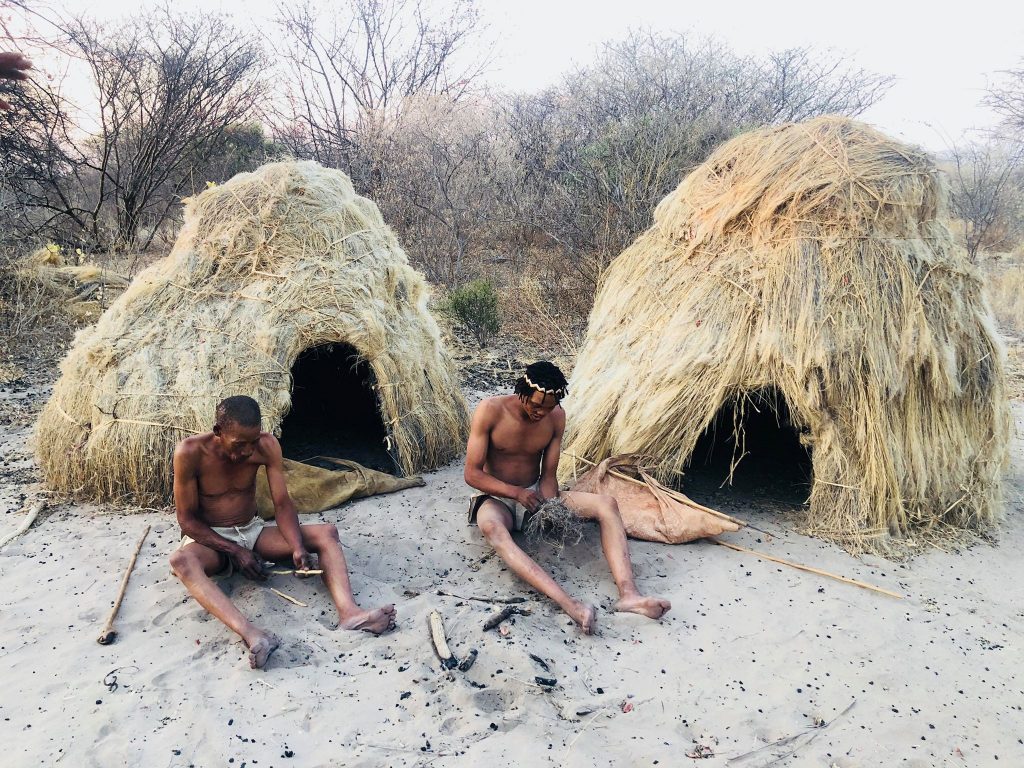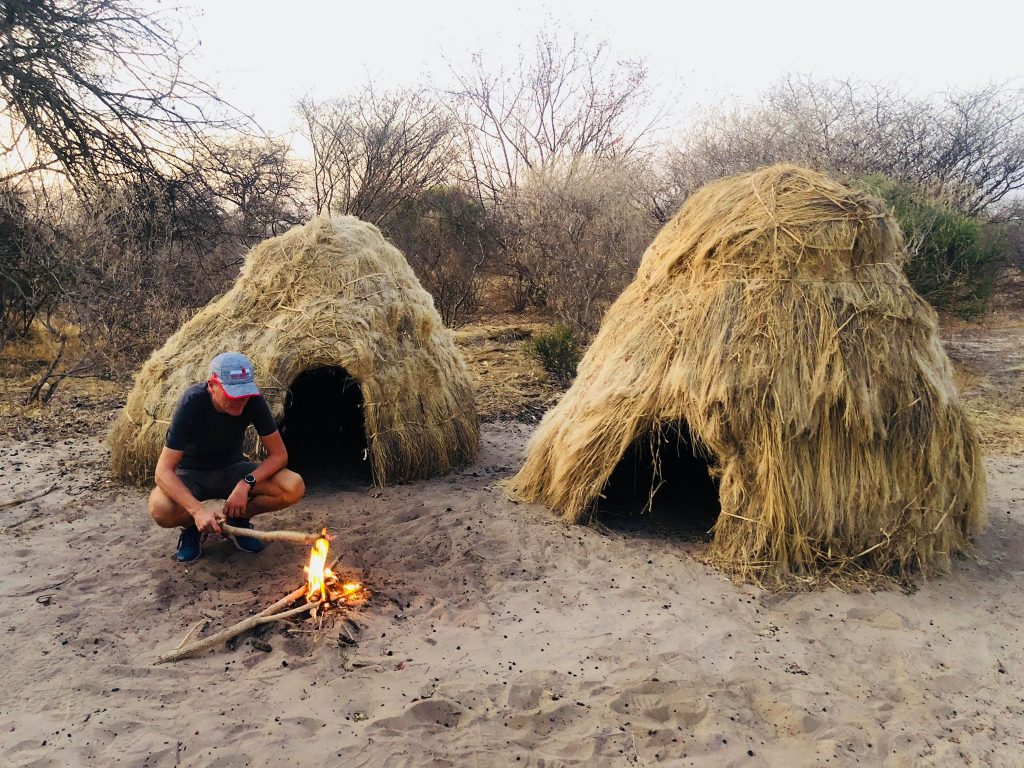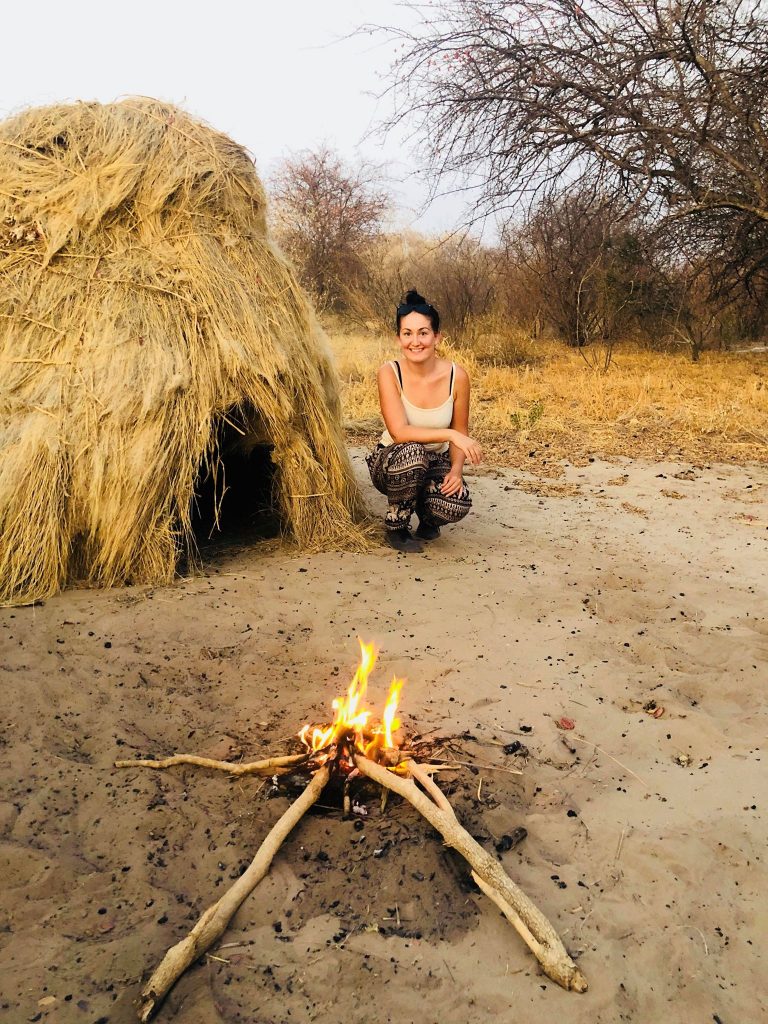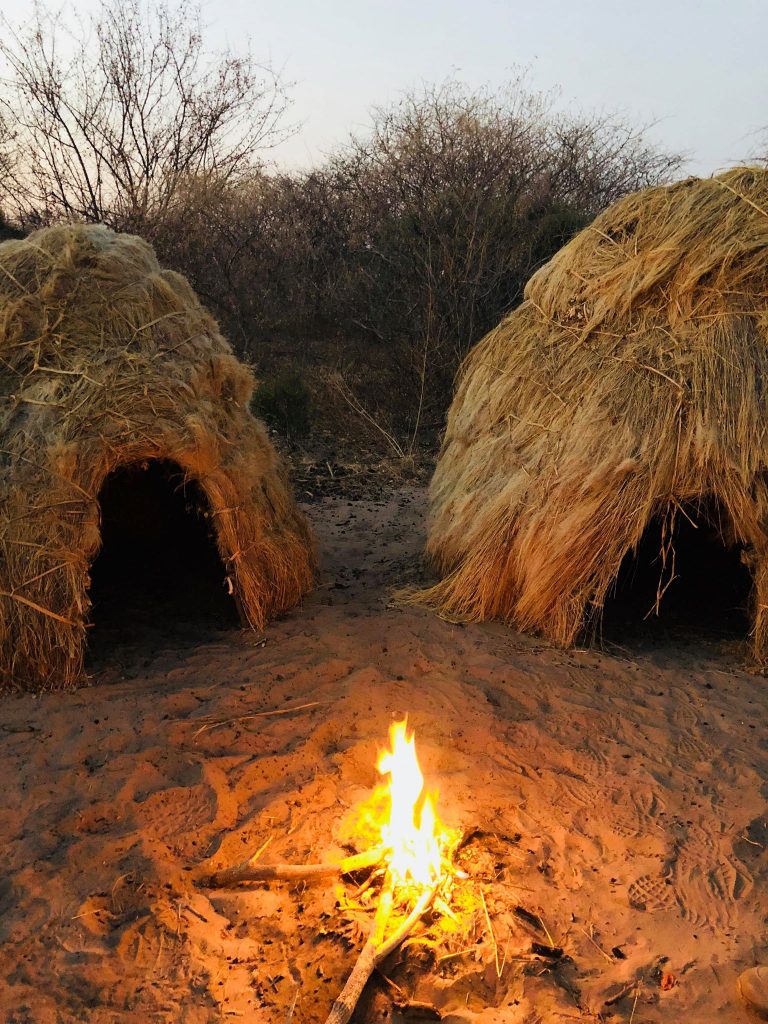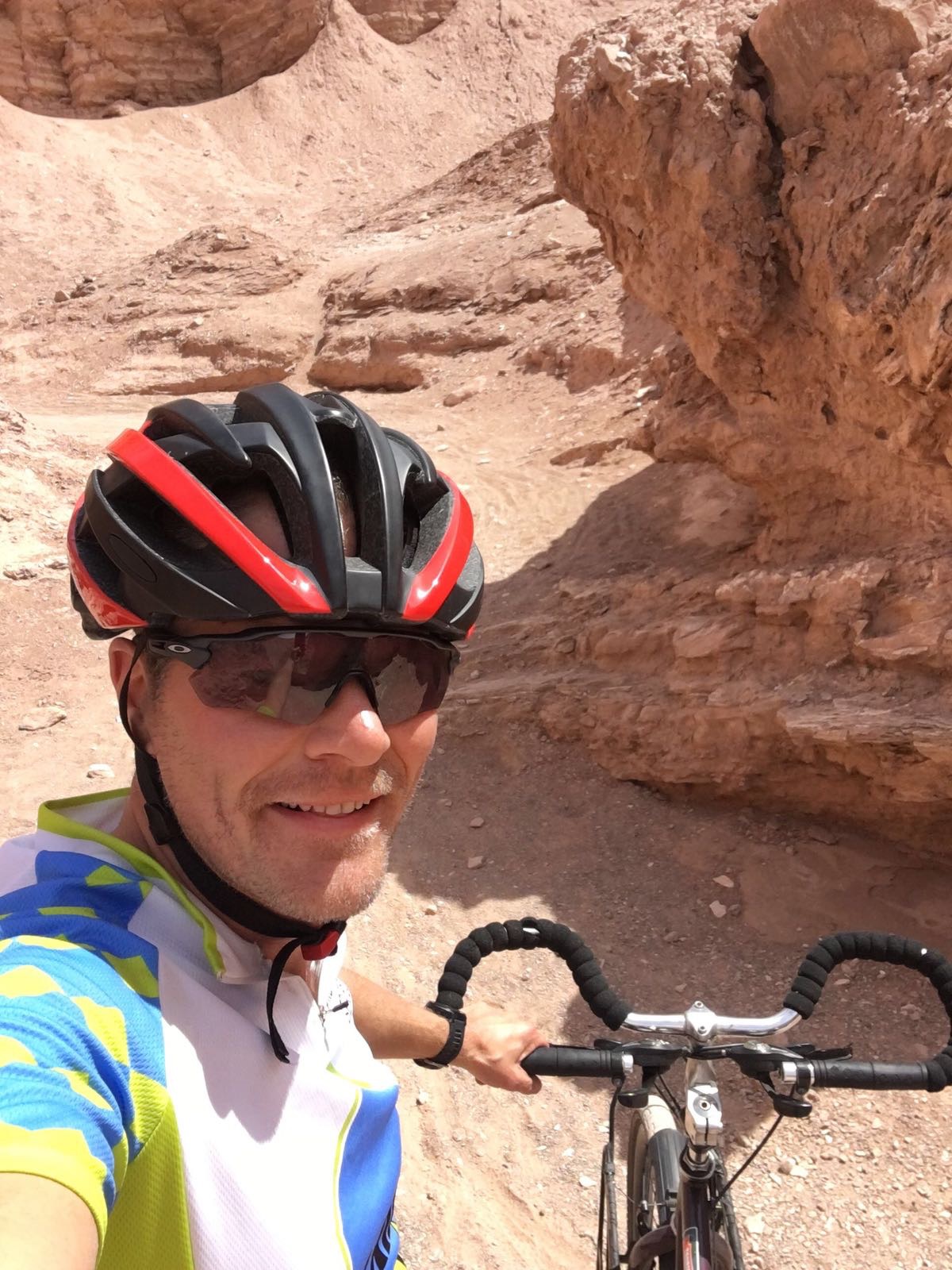We were invited by Knowledge to see the traditional ‘bushmen’ and how they survived, and still survive here in some areas, in the Kalahari. We ventured out in our vehicle to a remote part of the bush, and two of his friends, were ready to demonstrate how their people adapt, and live here.
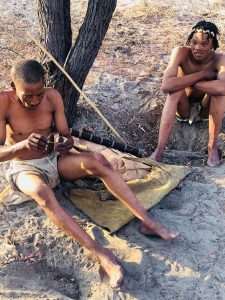
Bushmen is actually not the right term for the people who live like this, and has recently become quite derogatory, and use San People instead. Although, ask people of the kalahari what they prefer to be labelled as, and they would describe themselves as members of the Ju-Wasi, the !Kung, or any one of a dozen other language groups. For this blog, I will use San People.
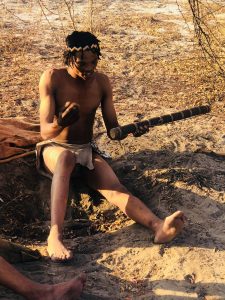

The two men who were demonstrating their skills for us, spoke only their own click language, and Knowledge translated for us. It was amazing to hear this dialect and language that flowed a lot more freely than I could imagine. They told us some simple words to repeat, and laughed at our inability to even put our tongues in the right place.
They walked us through the thick bush, and taught us how to make fire with sticks, effortlessly done by them.
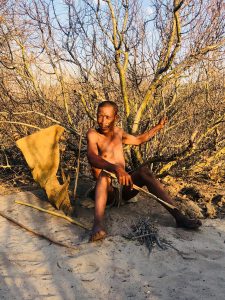
Showing us which plants were best for fire building
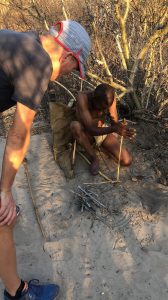
Creating fire with sticks
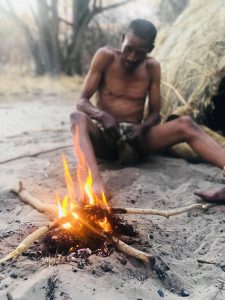
They also told us about how they utilised the trees around them, to make anything from bow and arrows, to traps, and even a needle and thread using only thorns. Using many of the plants to drain water from, and drink the sweet juice inside – it was delicious!
- Smashing the fruit from the tree
- Drinking the water from the fruit
It was so impressive to see everything they can do for themselves. Building houses, food and water sources, actual survival. A great presentation of how they have lived here for hundreds of years, and still continue to do so in some parts.
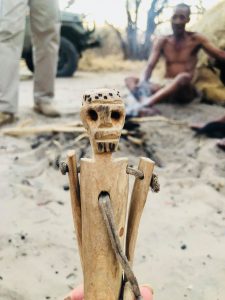
The magic man. Whilst hunting, the San people would use this man to attach to their toes, and move to flick the arms around. Whichever way the arms would land, would be the way to go to find animals to hunt.
The huts were made from mud and grass, and insulated from the elements outside. Staying cool in the day, and warmer in the evening. The fire strategically placed to not risk a fire to the huts, but also keep them warm and warn off any unwanted guests.


